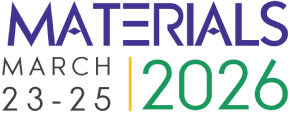Title : Avoiding low cycle fatigue conditions in solder material of IC packages
Abstract:
The presentation is an extension of the contents of the CRC book E. Suhir, Avoiding Inelastic Strains in Solder Joint Interconnections of IC Devices, CRC Press, Boca Raton, Florida, 2021. Three practically important problems associated with the reliability of solder joint interconnections (SJI) in IC packages are addressed:
1) Could inelastic strains in the solder material be avoided by a rational physical design, and if not, could the sizes of the inelastic strain areas be predicted and minimized? SJIs are the most vulnerable structural elements in the today’s IC packages: the solder material often experiences inelastic strains, and, because of that, suffers from low cycle fatigue conditions, and its fatigue lifetime is often shorter than required for many applications. There is an obvious incentive therefore to explore ways to bring down the induced stresses and strains in this material, even, if possible, to an extent that the inelastic strains are avoided. If this is impossible, the size of the inelastic zones could be, desirably, predicted and minimized. 2)The difference between an highly reliable and an insufficiently reliable IC product is “merely” in the level of their never-zero probability of failure. Since SJIs are usually the most vulnerable structural elements in an IC package design, could this probability be assessed at the design stage and, if possible, made adequate for the given application? The recently suggested probabilistic design-for-reliability (PDfR) concept enables assessing the probability of the operational failure by using predictive analytical (“mathematical”) modeling that determines this probability from the highly focused, highly cost-effective, carefully designed and thoroughly conducted, when developing a new manufacturing technology, failure-oriented-accelerated testing (FOAT). Highly physically meaningful and flexible multi-parametric Boltzmann-Arrhenius-Zhurkov (BAZ) equation, developed about a decade ago, could be applied to predict this probability from the FOAT data. The BAZ equation is based on the Boltzmann's equation in classical thermodynamics, Arrhenius equation in physical chemistry and Zhurkov's equation in experimental fracture mechanics.
3) Should temperature cycling accelerated testing for SJIs be replaced with a more physically meaningful, less costly, less time- and labor- consuming and, most importantly, less misleading test vehicle? Temperature cycling, the most widespread accelerated test today, is costly, time- and labor consuming, and, most importantly, can result in misleading information. This is mostly because electronic materials’ properties are temperature dependent, and testing is done in a temperature range, which is, as a rule, much wider than what the material will most likely encounter in actual operation. Since the highest thermal stresses occur in SJIs at low temperature conditions and, as is known from fracture mechanics, fatigue crack propagation is effectively accelerated by random vibrations, a low-temperature/random-vibrations bias is suggested as an attractive substitute for temperature cycling, especially for applications, when such a bias reflects the actual loading conditions. The general concepts, findings and recommendations are illustrated by detailed numerical examples.



